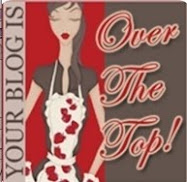
Yeah, yeah. You may have your glistening, crystalline, fairy tale snow. You may have your mountains, and your quaint villages, and your farmhouses and fields. You may have your hills, and your wild animals and your enormous trees and your citiscapes.
Yeah, you may have all of these and more.
But I have something that you don't have.
I have the motley Miami bunch, and they are an inexhaustible resource.
These four characters came from one wait at the tire place, and are on a single page of my moleskine. Proceeding clockwise from the top - the old man who really should have been drawn with a hand to his face because it kept migrating to his chin, keeping it covered half the time; the cheerful and friendly manager who clapped every customer on the back and passed out Cuban coffee - his skin was a shade dark with a greenish tinge (I swear); the gumby-shaped man with the elongated neck who looked something like Jeff Goldblum after he became "The Fly", and the ruddy-faced skipper, marooned no more.
And that's just one sitting.

Shortly after I started this blog, I began drawing what I call my "floating heads", the faces of folks that I have seen out and about. I was a bit amazed that I could draw people in public with impunity - they were either too involved in their lives to notice, or too embarrassed to say anything about it. Even now, it is my "default", what I do when I just want to relax.
Only once was I called out. A lady, loudly so I could hear, said to her daughter, "look, dear, that man is drawing me." If the sketch had been any good I might have walked right up to her, and shown her what I had done. As it was I probably blushed and turned the page to conceal the evidence. It was a particularly spectacular failure of a drawing. Of course, now it'd be different since every drawing I do is perfect. (Ri-ight.)
This little incident kept me from sketching in public for a few weeks, but then I was back at it. You can't keep an addict from his fix.
I've heard tale that some artists notify people before sketching them, and ask for permission. I am not so bold. Or so polite. Or something. I'm from Miami. That should explain it.
I've learned some tricks. I look for evidence to see how long they've been there, and how long they'll stay. I look for busy people, or people involved in conversations. I most like to draw folks that are not directly in front of me, but at an angle - there is less chance they'll notice, and the drawing is more interesting than a side or frontal view anyway.
The young girl above was a bit of an experiment for me. She is a much larger Floating Head than virtually all I have done in my Moleskines. I enjoyed the chance for detail in the hair, and the watercolor seemed to swish more than usual in her blouse. Swiiish! Or that might be an illusion. (Of course here I had a man looking on while I painted, giving me a sly knowing glance - looking at my drawing and then looking at her. I love an audience, a co-conspirator).
 This woman was particularly fun to draw. The big shame is that she was talking to a gnarly looking guy and the two together would have been just great. I ate first - that's what wasted my time - they were deep in conversation the whole time. Sometimes my hands resist getting started. Always make the first mark, then you have to go further. That's a great rule I often ignore.
This woman was particularly fun to draw. The big shame is that she was talking to a gnarly looking guy and the two together would have been just great. I ate first - that's what wasted my time - they were deep in conversation the whole time. Sometimes my hands resist getting started. Always make the first mark, then you have to go further. That's a great rule I often ignore.Do you know I never - and I mean never - have seen anyone else in Miami sketching people in public? I went to Art Basel last week, and saw a man staring towards a group of people and drawing in a small moleskine. I was ecstatic! I casually strolled behind him. He was sketching a potted plant. And I suspect he was from out of town.
Art Basel is an annual experience that I never miss if I can help it. I've seen so many wonderful original pieces of art that I would never see elsewhere, along with horrible outrageous but fun and thought-provoking things (they can only be called "things"). One item I saw there was a wire sculpture of a face, and I thought to myself I can do that!, and so I came home and grabbed some sculpture wire, and voila! He sits now on my piano. You know, the piano that no one plays.
I will sell the sculpture for $100,000, which is a low price, by Art Basel standards. I will throw in a nice stand. No extra charge.
Let me know if you are interested.
 |
| $100,000 |
 |
| WHAT A BARGAIN! |















































.jpg)

